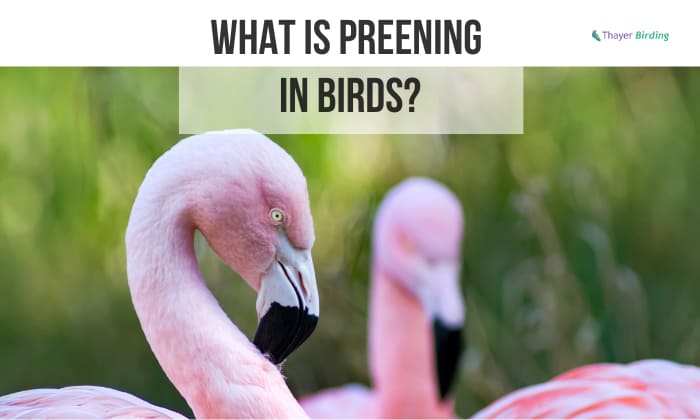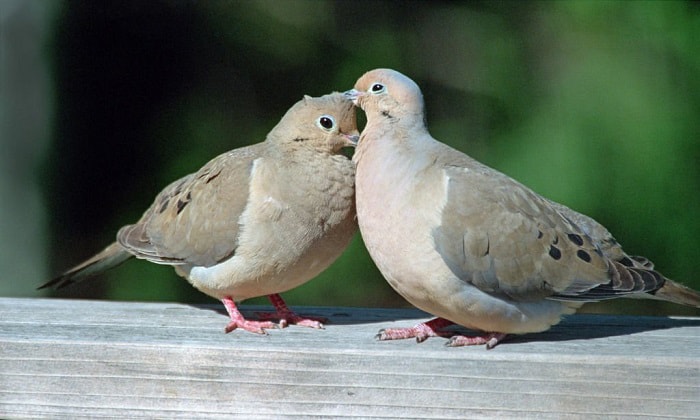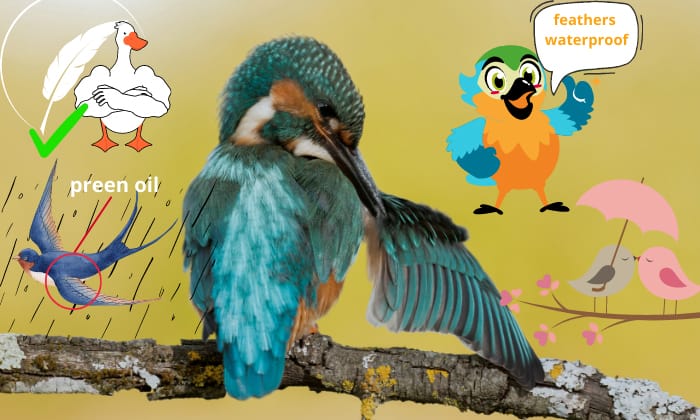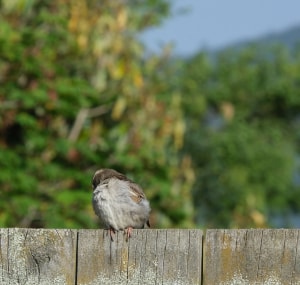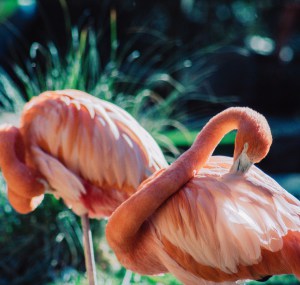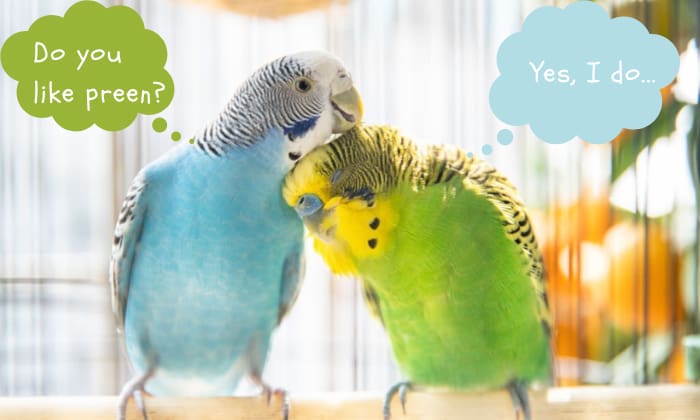What is preening in birds? Preening is basically a bird performing regular maintenance and grooming work on its feathers.
When they preen, birds clean themselves by removing anything stuck in their feathers, from dust and dirt to parasites. They also take the time to realign each feather and ensure they face the right way.
The practice isn’t just for vanity, though. Preening important for birds for their health and survival!
Table of Contents
What is Preening?
The general preening definition describes an act of grooming and making one’s self look presentable and smart.
For our feathery friends, preening meaning is the same–simply put, it is grooming for birds. However, there’s more for them at stake than just looking good.
Why is Preening Important?
There are several benefits and purpose of preening.
- Health – Preening keeps birds healthy and reduces the likelihood of feather-related diseases. Regularly removing dirt and parasites prevents possible outbreaks within the flock.
- Flying – If birds didn’t preen, they wouldn’t be able to fly! Aside from eliminating tough sheaths and arranging their feathers into the best possible aerodynamic position, they also coat them in a preen oil that keeps them flexible in the wind.
- Warmth – Another benefit of their preen oil is keeping their feathers waterproof, which is essential for staying warm in the wild.
- Courtship rituals – Birds that look strong and healthy have better chances of attracting a mate. But the preening itself is part of the ritual, too. Allopreening, or birds preening each other, is a way for bird couples to bond and communicate.
How Do Birds Preen?
Birds typically do four main things when preening feathers, usually in the following order: puff and shake, pick off debris, oil, and realign feathers. Keep on reading to find out what each stage entails.
1. Puff and shake
They often begin by fluffing up and shaking to throw off any loose dirt and parasites and interlock any feather barbules that have come separate.
In some birds (such as California quails, wild turkeys, larks, sparrows, etc.), this step also involves a dust bath, meaning the animal rolls in dry dust. This allows birds to get rid of excess preen oil and stubborn debris.
2. Clean with their beak
Afterward, they slowly and thoroughly clean themselves with their beaks, picking off any remaining dirt or parasites. Then, the bird will start fixing loose barbs and barbules.
Keeping barbules locked together is essential because they form a wind and waterproof barrier when they are all perfectly in place. This barrier is what allows birds to fly and stay dry and warm.
While re-aligning barbs, the bird may occasionally stretch so it can have an easier time reaching each feather.
3. Oil their feathers
Next, birds oil their feathers using a substance secreted by their uropygial or preening gland. This oily, waxy substance keeps their feathers soft, flexible, and waterproof, allowing them to last longer.
This step is particularly important in canary, finch, cockatoo, waterfowl, budgie, and parrot preening.
To rub the oil in their feathers, birds would use their foot to scrape off the collected oil on their beaks and apply it all over their bodies. That said, birds with particularly long necks can directly rub their head against their feathers for oil application.
Sometimes, though, birds can overdo it. When their feathers are too saturated with this oily wax, it can hinder their flight instead. So the birds may take a dust bath again to soak up the excess oil.
4. Realign feathers
Lastly, birds smooth out and realign each of their contour feathers, gently but quickly tracing them from base to tip.
Common Preening Problems in Birds
The most common preening problem in birds is over preening. This is when the bird cleans its feathers almost obsessively, sometimes even injuring itself in the process.
There are several possible reasons for this unhealthy preening behavior, including poor diet, a dry environment, boredom, anxiety, or exposure to other birds who over-groom.
Sometimes, though, pet birds can over preen because of something their owners do, such as handling them while their hands are oily. This causes the birds to feel “dirty” and start to clean themselves.
The common preening problem for birds in the wild mostly has to do with trash and pollution. When birds get dirty from oil spills or have pieces of plastic stuck to them, they can accidentally ingest these unnatural substances, leading to poisoning or choking.
Frequently Asked Questions
Why do birds preen each other?
Preening others is not typical among birds. Only about 43 families do allopreening, most of which are species that live in flocks.
Aside from being a form of social communication, the most significant benefit of allopreening is having someone help clean the bird’s hard-to-reach parts, such as the top of their heads or the back of their necks.
Is it normal for birds to preen a lot?
It’s normal for your bird to preen several times daily, usually after baths and meals. This can take up to 30% of their time.
What happens if a bird doesn’t preen?
If a bird doesn’t preen enough or at all, it can drastically affect its quality of life.
It will struggle to fly and stay warm and will look (and feel) sick. Its feathers will look dull, and its colors will become less vibrant from parasite infection. Lastly, it may even begin to look like a porcupine due to feathers sticking out at odd angles.
Since birds preen when they are happy, it may be a sign that your bird is stressed, anxious, or dealing with pain.
How to tell if your bird is over preening
You can tell your bird is over preening if it has bald spots and its feathers appear broken, frayed, and thinning.
You can help your bird by giving it more toys for distraction or misting it more often to make it more comfortable!
Why are birds preening humans?
Birds preen to remove any foreign objects on their feathers or the feathers of their flockmates. Sometimes, they act on their instinct toward their human owners as a sign of affection.
Sometimes, though, it doesn’t always go as planned: Bird owners have shared stories of their pets picking off their scabs by accident, thinking it was dirt!
If you want to preen your bird back, the bird preening tool you have is your fingers! You can gently rub its feathers to remove dust and smoothen them out.
Is anting in birds part of preening?
Anting is when birds lie down on the ground and allow ants to crawl all over them.
While scientists are still unsure why birds do this, one theory is that ants can pick off lice and mites inside a bird’s feathers.
Therefore, you could say that the practice of anting is birds using ants to preen themselves!
Conclusion
What is preening in birds? It is bird self-grooming that helps them look good, feel good, and improve flight. The ritual can also be used as a bonding between birds or a bird with its owner.
In short, it’s a practice that helps birds hit four birds with one stone!
So the next time you see your bird fussing with its feathers, don’t worry; it’s not itchy. It’s just ensuring its feathers are in their best possible shape–and that they stay that way!

George and I became friends after a birdwatching trip with our new group. And we have been enjoying every adventure together. When he told me the idea of establishing a site that shares our experiences and fun, I immediately agreed. After trials and errors, here we have Thayerbirding.


